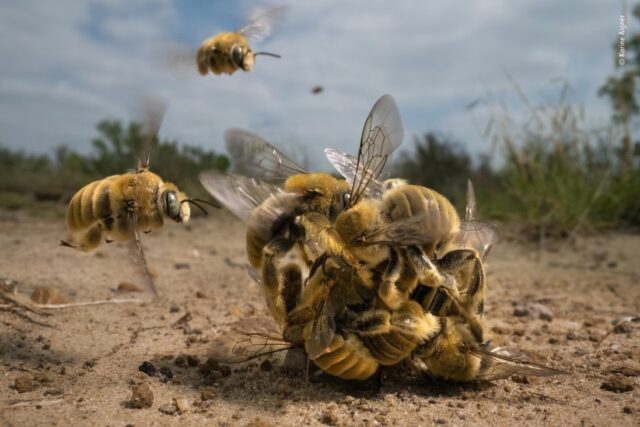Highlights of the world’s most prestigious nature photography exhibition will open at the Natural History Museum at Tring on 12 November.
The annual exhibition returns to Tring with stunning lightbox displays running until 18 June 2023. Young Wildlife Photographer of the Year features 17 awe-inspiring images, depicting the incredible diversity of life on our planet.
Interpretation and Exhibitions Manager, Natural History Museum at Tring, Claire Walsh said: ‘We are thrilled to welcome back the fifty eighth Young Wildlife Photographer of the Year exhibition to Tring.
‘This year we have decided to feature all the Young Wildlife Photographers, alongside the overall winner. We hope that this will encourage and inspire our family audiences to get outside in nature, take some photographs and maybe enter the competition themselves. The photographs showcase some of the worlds the best young photographers and the future of the competition.’
The selection on display includes all photos awarded in the Young Wildlife Photographer of the Year 2022 competition, the Rising Star portfolio, and this year’s two Grand Title winners. It will also include short films on the two Grand Title images.
American photographer Karine Aigner was announced as this year’s Wildlife Photographer of the Year for her remarkable image of a buzzing ball of cactus bees spinning over the hot sand on a Texas ranch. In her bee-level close-up, all except one are males and they are intent on mating with the single female at the centre. Like most bees, they are threatened by habitat loss, pesticides and climate change, as well as farming practices that disrupt their nesting grounds.
Karine is the fifth woman in the competition’s fifty-eight-year history to be awarded the Grand Title award.
Chair of the judging panel, writer and editor, Rosamund ‘Roz’ Kidman Cox OBE says, ‘Wings-whirring, incoming males home in on the ball of buzzing bees that’s rolling straight into the picture. The sense of movement and intensity is shown at bee-level magnification and transforms what are little cactus bees into big competitors for a single female.’
Dr Doug Gurr, Director of the Natural History Museum comments, ‘Wildlife photographers offer us unforgettable glimpses into the lives of wild species, sharing unseen details, fascinating behaviours and front-line reporting on the climate and biodiversity crises. These images demonstrate their awe of and appreciation for the natural world and the urgent need to take action to protect it.’




